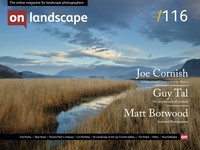Trust and Freedom of Expression
Impressed by the aspect of the world the thinker plunges into ideas, the scientist into facts … They speak authoritatively to our common-sense, to our intelligence, to our desire of peace or to our desire of unrest; not seldom to our prejudices, sometimes to our fears, often to our egoism — but always to our credulity. … It is otherwise with the artist. Confronted by the same enigmatical spectacle the artist descends within himself, and in that lonely region of stress and strife, if he be deserving and fortunate, he finds the terms of his appeal. His appeal is made to our less obvious capacities. ~Joseph Conrad
Can you appreciate both a good novel and a good piece of journalism? How about a good poem and a good guidebook? Why is it that many are so resistant to accommodating multiple uses for photography as they do for writing, and see their way to finding reward and meaning, in different ways, in both representational and non-representational photography?
A photography maven recently commented that due to the proliferation of digital means for manipulating images, “people no longer trust photographs.” Although his assertion was meant to be critical, my reaction to his words was this: good! it’s about time. People should absolutely not implicitly trust photographs. Without going into lengthy diatribes about such things as morality or other soapbox ballyhoo, this should be the case if only for the simple reason that photographs not representing (or even meant to represent) objective reality are abound, and one would be pretty foolish to ignore this fact and to trust blindly in the realism of all photographs. Trust in any form of expression, be it visual or verbal, and in whatever medium, should be decided not by whether something was created with a camera or a word processor, but by its source and within the context in which it is presented.


